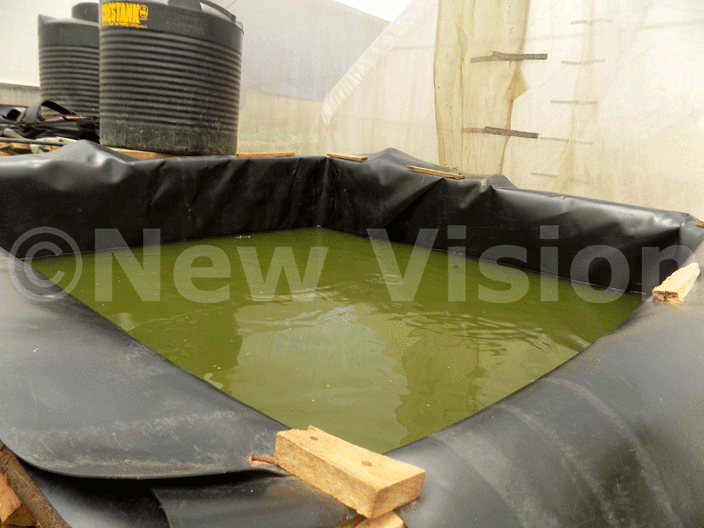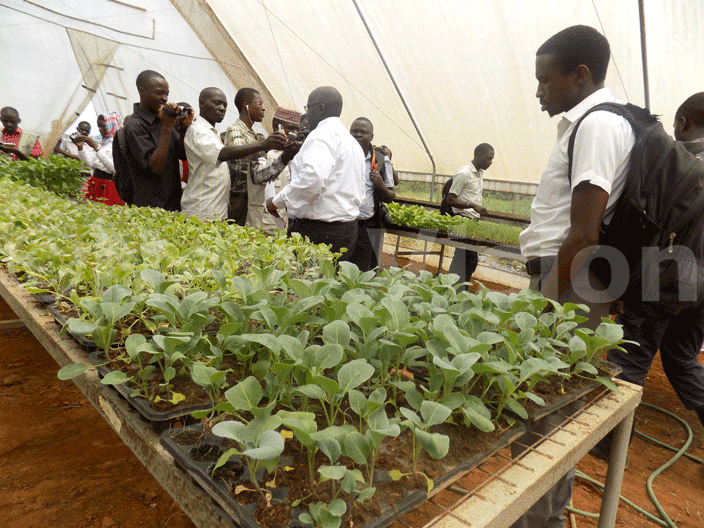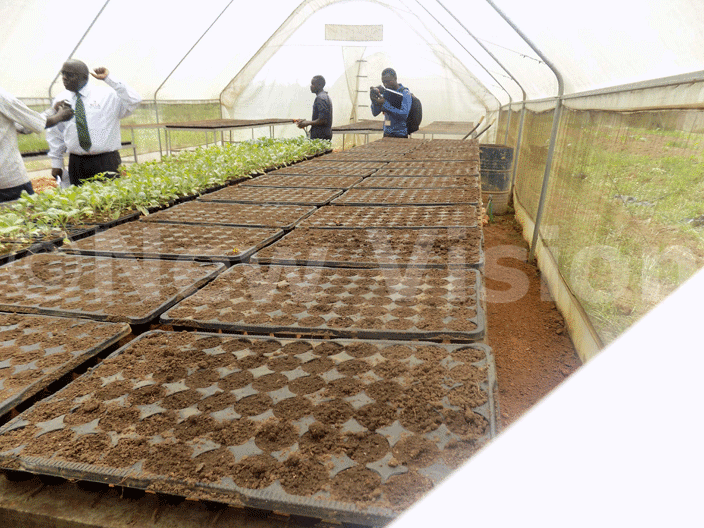KCCA to train Kampala dwellers in urban farming
Apr 08, 2016
The authority set up the Agriculture Resources Centre in Kyanja, Kawempe division and their efforts are paying off.

Three years ago, the Kampala Capital City Authority (KCCA) set out to improve the income of city dwellers through urban farming.
The authority set up the Agriculture Resources Centre in Kyanja, Kawempe division and their efforts are paying off.
According to KCCA's deputy director for production and marketing, Dr Esau Galukande: "The people, who have visited the resource centre, are already putting into practice what they learnt and their income has increased as they sell some of the produce they grow and animals they keep."
Galukande revealed this during a field tour at the centre in Kyanja Kawempe division Kampala on Thursday.
 A modernized fish pond at Kampala Capital City Authority (KCCA) Agriculture Resource Center in Kyanja Kawempe division Kampala district. Photo by Lawrence Mulondo.
A modernized fish pond at Kampala Capital City Authority (KCCA) Agriculture Resource Center in Kyanja Kawempe division Kampala district. Photo by Lawrence Mulondo.
He added that the centre will be open to the public every Wednesday for tours and free lectures on how to carry out urban farming.
Galukande explained that urban farming will solve the unemployment problem in the city.
The centre sits on 31 acres of land with over five projects, including poultry, piggery and modernised fish ponds, vegetables including tomato, sweet pepper and sukumawiki all grown in green houses.
Galukande told the New Vision that funding for the centre comes from National Agricultural Advisory Services and non-tax revenue from the authority.
He added the centre produces seedlings for crops such as tomatoes, sukumawiki and sweet pepper, which they give free-of-charge to those registered for NAADS programme, while other members of the public buy the seedlings at sh500 each.
Godfrey Kato, one of the agriculture attendants at the centre, said they grow tomatoes, sweet pepper and sukumawiki on steamed soil greenhouses to prevent bacterial wilt and other pests from attacking the crops.
Kato said they harvest 120kg of tomatoes from their 450 plants and sell them to supermarkets earning the authority sh300,000 per week.
He added the centre earns sh100,000 from sukumawiki, which they harvest and sell weekly. Kato added they harvest 50kg from the sweet pepper each week and sell each kilogramme at sh7,000 in supermarkets and hotels.
 Journalists touring a Sukuma Wiki nusery bed in one of the greenhouses at Kampala Capital City Authority (KCCA) Agriculture Resource Center in Kyanja Kawempe division Kampala district. Photo by Lawrence Mulondo.
Journalists touring a Sukuma Wiki nusery bed in one of the greenhouses at Kampala Capital City Authority (KCCA) Agriculture Resource Center in Kyanja Kawempe division Kampala district. Photo by Lawrence Mulondo.
Sam Ssenoga, the agriculture attendant in charge of the fish farm, said it was set up six months ago to teach city dwellers modern methods of rearing fish.
He said the farm has 5,000 catfish in different ponds made using woods and dam liner.
Ssenoga added that the catfish which take only eight weeks to mature, feed on a kilogramme of fish pellets per day.
At the resource centre, there is a non-automated hydroponic unit where KCCA grows barley which they feed their feeds to reduce on costs at the farm.
Here, barley seeds are washed and soaked in water for four hours to soften them and then they are put in tray where they are watered irrigated with pumps every three hours for one day. They are then covered with black polythene sheets and then served to pigs.

However, there is a manual hydroponic unit where the barley is watered manually. According to Kato, they also construct pigsties without concrete, but spread a layer of dry grass and wood shavings on the floor.
They then disinfect the pigsty with indigenous micro-organisms, which they make from starchy foods such as sweet potatoes. This is done to eliminate stench from the piggery
